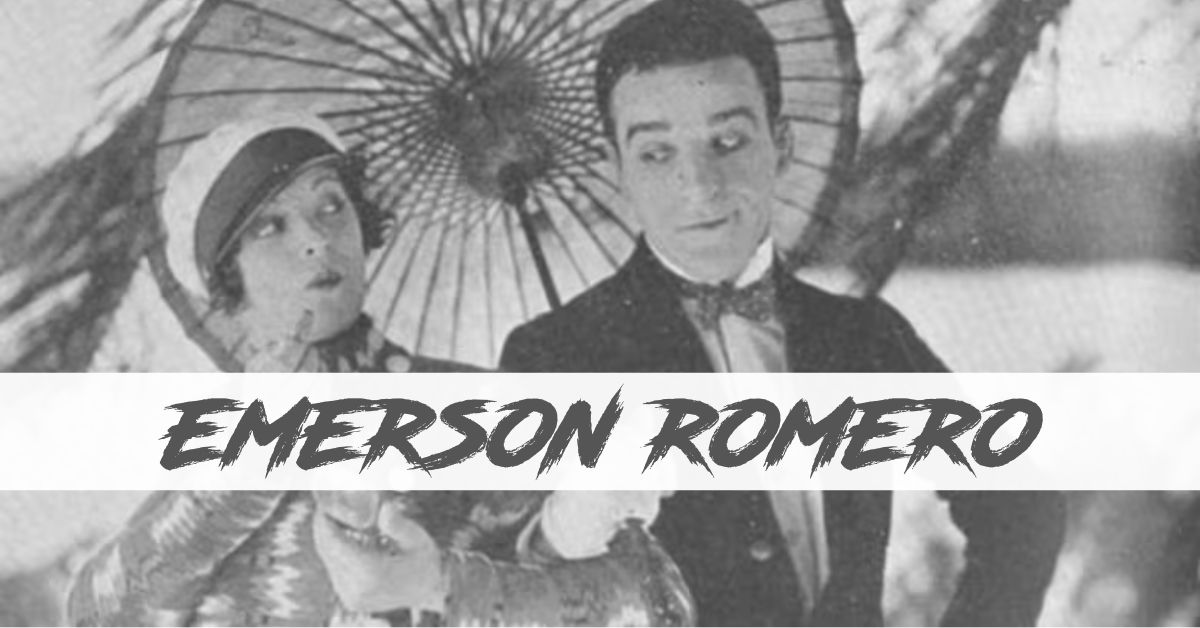Celebrity
Emerson Romero: Film Captioning Pioneer

Introduction
Emerson Irving Romero, better known by his screen name Tommy Albert, holds a unique and pioneering position in the history of American cinema and accessibility. Born on August 19, 1900, in Havana, Cuba, and later settling in the United States, Romero was not only a silent film actor but also the first individual to develop a technique for captioning sound films. This innovation profoundly impacted the way media is consumed by deaf and hard-of-hearing individuals and laid the groundwork for modern captioning techniques used globally today.
This article dives deep into the life, contributions, and legacy of Emerson Romero, exploring how his passion for cinema and advocacy helped transform the entertainment industry.
Early Life and Education
Emerson Irving Romero was born into a culturally rich family in Havana, Cuba. His early childhood took a drastic turn when, at the age of six, he was rendered deaf due to a severe fever brought on by whooping cough. Despite this significant setback, Romero’s life trajectory was anything but limited.
He attended the Wright Oral School in New York City from 1907 to 1915, an institution dedicated to educating deaf students using oralist methods. Romero’s educational journey was far from conventional. After completing the Wright Oral School’s program, he briefly attended Stuyvesant High School and later transferred to Interlaken High School in Indiana, eventually graduating from Blair Academy in New Jersey in 1920.
Romero’s pursuit of higher education took him to Columbia University in New York City, where he studied for one year before transferring to Lafayette College in Easton, Pennsylvania. Unfortunately, financial troubles forced him to leave college before completing his degree.
Quick Profile: Emerson Romero
To better understand the journey and achievements of Emerson Romero, here’s a quick reference table outlining his key life details:
| Category | Details |
| Full Name | Emerson Irving Romero |
| Screen Name | Tommy Albert |
| Date of Birth | August 19, 1900 |
| Place of Birth | Havana, Cuba |
| Date of Death | October 16, 1972 |
| Place of Death | Boulder, Colorado, U.S. |
| Age at Death | 72 years |
| Known For | Inventing early film captioning methods |
| Relation to Cesar Romero | First Cousin |
| Cause of Deafness | Whooping cough at age 6 |
| Education Institutions | Wright Oral School, Columbia University, Lafayette College |
| Profession | Silent film actor, Accessibility pioneer |
Career in Silent Films
Romero’s foray into the film industry began under the stage name Tommy Albert. During the silent film era, Romero acted in several short films and features. His career was groundbreaking in more ways than one—not only was he a deaf actor during a time when accommodations were virtually nonexistent, but he also managed to carve out a niche in an industry that typically marginalized individuals with disabilities.
Though his acting career didn’t reach the heights of major stars of his era, his involvement in the silent film industry gave him firsthand experience with the limitations faced by deaf audiences and performers.
The Challenge of Sound Films
The arrival of “talkies” or sound films in the late 1920s changed the entertainment landscape forever. However, this innovation created a significant accessibility barrier for deaf and hard-of-hearing individuals, including Romero himself. Silent films, which relied on visual storytelling and intertitles, were accessible to the deaf community in ways that sound films were not. With the rise of audio dialogue, many deaf viewers found themselves excluded from cinematic storytelling.
Romero recognized this accessibility gap and took it upon himself to create a solution. This endeavor marked the beginning of his contributions to film captioning—a field that would not gain widespread recognition or support for decades.
Innovating Film Captioning
In the early 1940s, Romero began developing a method to add captions to sound films. At a time when accessibility tools for the deaf were scarce and underfunded, Romero’s work was both revolutionary and courageous. His method involved physically cutting and splicing text strips into film reels to display dialogue and key sounds.
This technique, although rudimentary compared to modern standards, was a game-changer. It allowed deaf viewers to follow spoken dialogue and sound effects, making movies accessible once again. While Romero did not receive much attention during his lifetime for this invention, his work laid the foundation for the closed captioning systems we benefit from today.
Advocacy and Community Involvement
Romero’s contributions went beyond technical innovation. He became an active advocate for the deaf and hard-of-hearing community, pushing for greater representation and accessibility. His firsthand experience with discrimination and exclusion in both education and the entertainment industry made him a powerful voice for change.
Though formal institutions were slow to adopt his captioning methods, Romero’s initiative inspired further research and advocacy, eventually leading to the development of the captioning technologies we rely on in contemporary broadcasting and streaming.
Family Ties: Cesar Romero Connection
Interestingly, Emerson Romero was a first cousin to famed Hollywood actor Cesar Romero, best known for his portrayal of the Joker in the 1960s “Batman” television series. Despite their divergent paths—one reaching mainstream stardom and the other working largely behind the scenes—both Romeros left lasting legacies in film.
This familial connection also underscores the breadth of talent and determination in the Romero family, highlighting Emerson’s unique contribution to inclusivity in cinema.
Later Years and Legacy
Emerson Romero passed away on October 16, 1972, in Boulder, Colorado, at the age of 72. At the time of his death, his contributions had still not received the widespread acclaim they deserved. It would take years before the significance of his work was fully recognized.
Today, Romero is remembered not just as an actor, but as a visionary who challenged the limitations placed upon the deaf community. His efforts to bridge the gap between audio and visual storytelling have influenced everything from subtitles in global cinema to closed captioning in educational content, news broadcasts, and online videos.
Influence on Modern Captioning
Modern captioning techniques—including closed captions, subtitles for the deaf and hard of hearing (SDH), and real-time transcription—owe much to the groundwork laid by Emerson Romero. In fact, several accessibility policies in the United States, including Section 508 of the Rehabilitation Act and FCC mandates, have roots in the advocacy work that Romero inspired.
Streaming platforms like Netflix, YouTube, and Amazon Prime now offer robust captioning features, a development that has democratized access to entertainment for millions of deaf and hard-of-hearing individuals.
Emerson Romero’s Place in History
While Emerson Romero may not be a household name, his influence is evident in nearly every corner of modern media. Whether you’re watching a film with subtitles, turning on closed captions during a live news event, or relying on transcription services in educational settings, you’re benefiting from a legacy that began with Romero’s pioneering work.
He serves as a reminder of the power of individual action and innovation. Romero didn’t wait for a solution—he created one. In doing so, he ensured that the deaf and hard-of-hearing community could remain included in one of the most important storytelling mediums of our time.
Conclusion
Emerson Romero was more than an actor or inventor; he was a trailblazer whose work bridged the worlds of cinema and accessibility. His life’s journey—from being deafened at age six to revolutionizing how films are enjoyed by the deaf community—illustrates an extraordinary blend of resilience, creativity, and advocacy.
Though largely unrecognized during his lifetime, Romero’s contributions continue to echo through the halls of film history and accessibility activism. He remains a vital figure in the ongoing journey toward inclusive entertainment.
References
- Emerson Romero – Wikipedia















